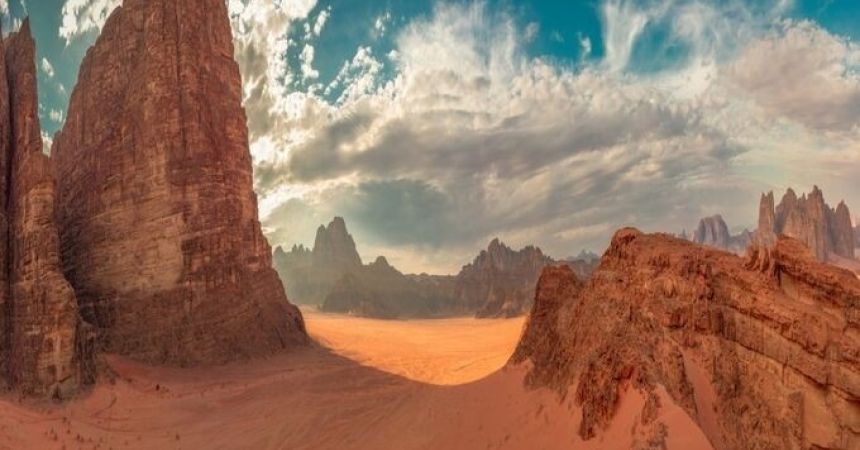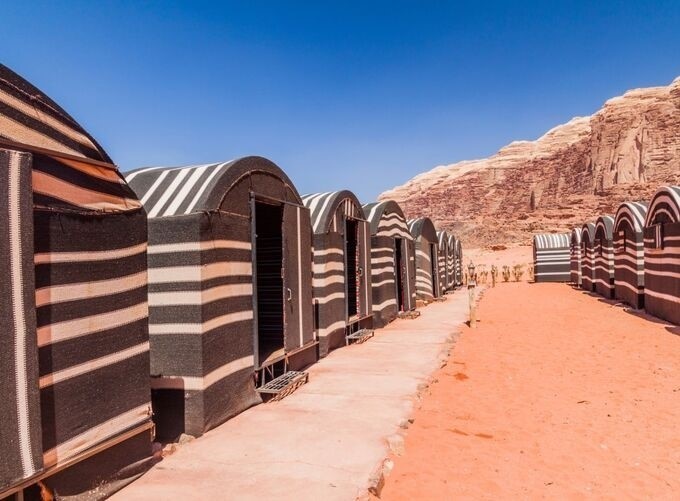
When Is the Best Time to Visit Jordan? Complete Travel Guide
Jordan, a land of ancient wonders and breathtaking landscapes, offers an array of experiences that vary significantly with the seasons. From the majestic ruins of Petra and the serene waters of the Dead Sea to the vast expanses of the Wadi Rum desert, the timing of your visit can greatly influence your experience. This comprehensive guide will help you navigate Jordan’s seasons to determine the best time for your visit, ensuring you make the most of your journey to Jordan.
Overview of Jordan’s Climate
1.1. Geography and Climate Zones
Jordan’s climate is as diverse as its landscapes. The country can be divided into several climatic zones:
Mediterranean Climate: Found in the highlands and major cities like Amman, characterized by mild, wet winters and hot, dry summers.
Desert Climate: Dominates the southern regions, including Wadi Rum, with extreme temperatures and very little rainfall.
Arid Climate: The Dead Sea area experiences an arid climate, with extremely hot summers and mild winters.
Understanding these climate variations is key to selecting the best time to visit Jordan based on your interests and activities.
1.2. General Weather Patterns
Jordan’s weather patterns are influenced by its topography.
Winter (December to February): Mild to cool temperatures in the highlands, with the possibility of snow in the mountainous areas. Desert regions can be chilly at night.
Spring (March to May): Pleasant temperatures with blooming wildflowers and clear skies. Ideal for outdoor activities and sightseeing.
Summer (June to August): Hot temperatures, especially in desert regions and lowlands. Coastal and highland areas remain relatively cooler.
Autumn (September to November): Warm temperatures gradually cooling down, with minimal rainfall. Perfect for exploring both cities and natural landscapes.
Best Time to Visit Jordan by Season
2.1. Spring (March to May)
Why Spring is Ideal:
Spring is arguably the best time to visit Jordan due to its mild weather and natural beauty.
Weather: Pleasant temperatures ranging from 15°C to 25°C (59°F to 77°F) make it comfortable for sightseeing and outdoor activities. Spring is also characterized by blooming wildflowers and lush greenery, particularly in northern regions.
Events: The spring season coincides with various local festivals and cultural events. The Jerash Festival, held in July, showcases Jordanian music, dance, and arts. Although slightly outside the spring season, early bookings can help you experience this cultural celebration.
Tourist Crowds: Spring is popular among tourists, but the crowds are manageable compared to the peak summer season. It’s an ideal time for those who prefer a balance between pleasant weather and fewer tourists.
Activities to Enjoy:
- Petra: Explore the Rose Red City with comfortable temperatures and minimal risk of rain.
- Wadi Rum: Experience jeep tours and camel rides in the cooler desert climate.
- Dead Sea: Enjoy floating in the mineral-rich waters and mud treatments without the intense summer heat.
- Hiking: Spring is perfect for hiking in the Dana Biosphere Reserve and other nature reserves.
2.2. Summer (June to August)
Why Summer Can Be Challenging:
Jordan’s summer months bring high temperatures, particularly in desert and lowland areas.
Weather: Expect scorching temperatures, often exceeding 40°C (104°F) in desert regions and around 30°C (86°F) in cities. Coastal areas and highlands remain cooler but can still be warm.
Tourist Crowds: Summer is a peak tourist season, particularly around major attractions like Petra and the Dead Sea. This can result in higher prices and crowded sites.
Local Festivals: Despite the heat, summer hosts various local festivals and events. The Jerash Festival of Culture and Arts is a highlight, offering a unique opportunity to experience Jordanian culture.
Activities to Enjoy:
Dead Sea: Ideal for cooling off and enjoying spa treatments. The mineral-rich waters and mud baths provide a unique relaxation experience.
Petra: Early morning or late afternoon visits are recommended to avoid the midday heat.
Night Desert Tours: Enjoy the cooler desert nights in Wadi Rum with stargazing and Bedouin-style camping.
Tips for Beating the Heat:
Hydration: Stay hydrated and carry plenty of water.
Sun Protection: Wear sunscreen, a hat, and light clothing to protect against sunburn.
Timing: Plan outdoor activities early in the morning or late in the afternoon to avoid peak heat.
2.3. Autumn (September to November)
Why Autumn is a Great Time:
Autumn offers mild temperatures and a more relaxed travel experience compared to the summer months.
Weather: Temperatures gradually decrease, ranging from 20°C to 30°C (68°F to 86°F). This makes it a comfortable time for exploring both urban and rural areas.
Tourist Crowds: The tourist crowds begin to thin out compared to summer, allowing for a more enjoyable experience at popular sites.
Events: The autumn season includes various local events and festivals. The Amman International Book Fair and the Jordan Festival are notable events to experience.

Activities to Enjoy:
Petra: Enjoy exploring Petra with cooler temperatures and fewer crowds.
Wadi Rum: Experience the desert landscape in pleasant temperatures and take advantage of autumn’s clear skies.
Ajloun: Explore the medieval Ajloun Castle and nearby nature reserves in comfortable weather.
2.4. Winter (December to February)
Why Winter Can Be Special:
Winter in Jordan offers a unique experience with cooler temperatures and fewer tourists.
Weather: Winter temperatures range from 5°C to 15°C (41°F to 59°F) in highland areas and can drop below freezing in mountainous regions. Desert regions are chilly at night, while the Dead Sea area remains relatively mild.
Tourist Crowds: Winter sees fewer tourists, which can lead to a more peaceful visit to major attractions.
Snow: In higher elevations like Petra and Ajloun, snow is possible, providing a picturesque contrast to the usual arid landscapes.
Activities in Jordan to Enjoy:
Petra: Explore Petra’s unique winter landscape and enjoy a quieter experience.
Dead Sea: The mild weather makes it a good time for floating and spa treatments without the intense summer heat.
Skiing: Although Jordan does not have extensive ski resorts, the nearby hills occasionally offer opportunities for skiing and snowboarding.
Tips for Winter Travel in Jordan:
Warm Clothing: Pack warm clothing and layers, especially if you plan to visit higher elevations.
Accommodation: Consider booking accommodations with heating facilities to stay comfortable during the cooler nights.
Weather Check: Monitor weather conditions for any potential travel disruptions due to snow.
Special Considerations for Planning Your Trip to Jordan
3.1. Festivals and Cultural Events
Jordanian festivals and cultural events can greatly enhance your travel experience.
Jerash Festival (July-August): A celebration of Jordanian arts, music, and dance held in the ancient city of Jerash.
Amman International Book Fair (October): A literary event showcasing local and international authors and publishers.
Jordan Festival (August-September): A cultural event featuring performances, concerts, and art exhibitions.
3.2. Peak Tourist Seasons
Jordan experiences peak tourist seasons during spring and autumn. If you prefer a quieter experience, consider traveling during the shoulder seasons or winter months. Booking accommodations and tours in advance can help secure the best rates and avoid last-minute hassles. Jordanian cuisine tours
3.3. Health and Safety
Regardless of the season, ensure you have adequate health precautions in place. This includes:
- Vaccinations: Stay up-to-date with routine vaccinations and consider additional vaccinations based on your travel plans.
- Local Advice: Stay informed about any travel advisories or local safety concerns.
Step Into History with Travel to Jordan
Choosing the best time to travel to Jordan depends on your interests and preferences. Whether you’re drawn to the ancient wonders of Petra, the serene beauty of the Dead Sea, or the dramatic landscapes of Wadi Rum, each season offers unique opportunities to explore and enjoy Jordan.
Spring is ideal for pleasant weather and outdoor activities.
Summer provides a chance to experience local festivals and enjoy the Dead Sea.
Autumn offers comfortable temperatures and fewer crowds.
Winter presents a quieter travel experience with the possibility of snow in higher elevations.



